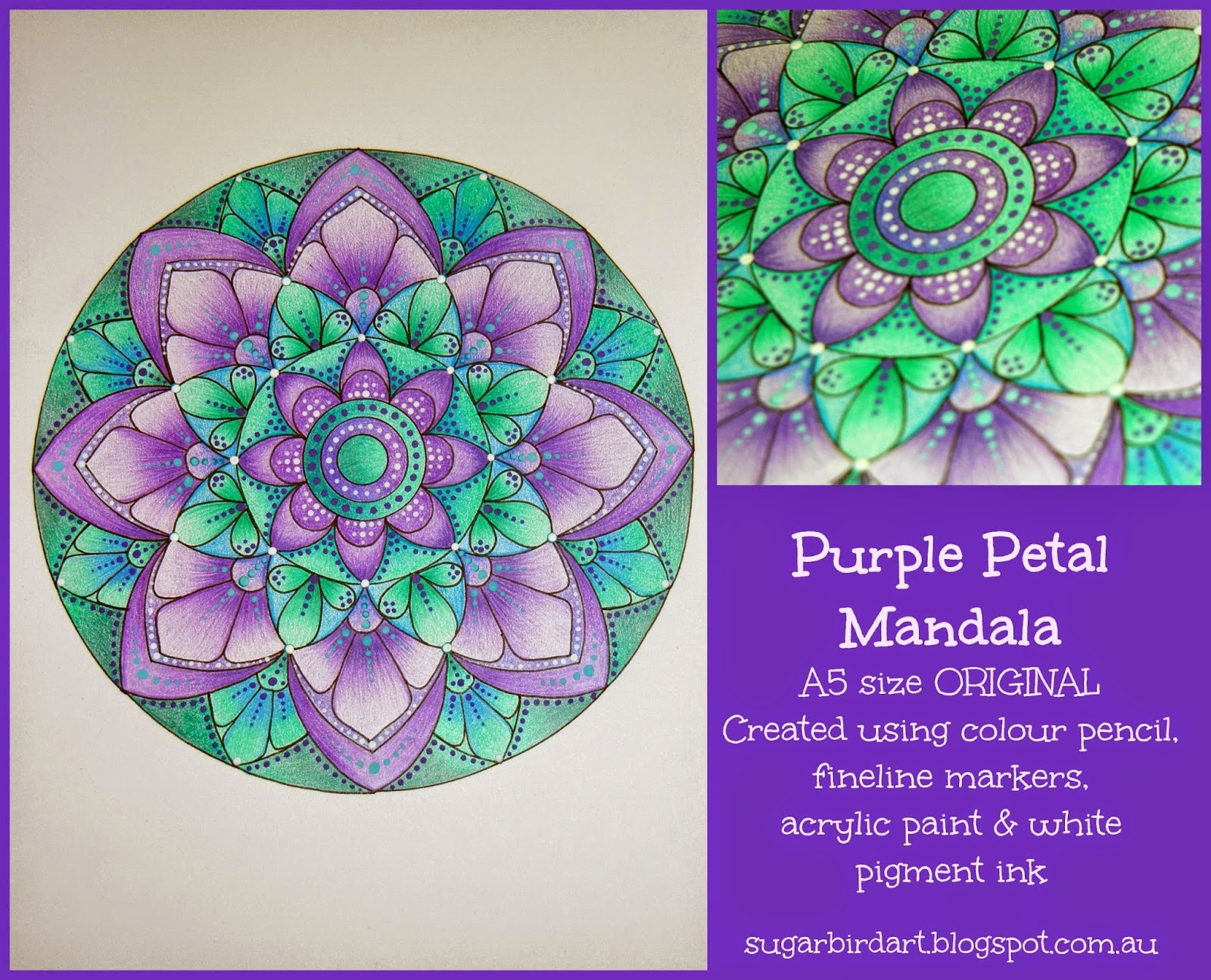Part 3
Adding colour
Now that you have the design all worked out and inked up, it is time to add some colour!!!
I have to admit that I am really rather fond of colour pencils - there are so many different ones that can achieve so many different effects. I like to use good quality pencils that give clean solid colour and blend well.
I have two favourites at the moment.
The ever popular Derwent Artists (the best Christmas present ever) High quality, strong colours and they blend so well.
And, somewhat surprisingly, Faber Castell Classic Colours. I say 'surprisingly' because they are great value for money. I get them from K-Mart in a pack of 36 for around $20. Great colour range, lovely colours and they blend well. I will be using them to colour this mandala.
There are any number of tutorials on how to achieve shading with colour pencils on the Internet. I am not an expert, I just know what works for me.
Start by colouring the entire shape in with the lighter colour. Then add lines radiating out from one point, in the darker colour. The darker colour only covers 2/3 of the shape, leaving the lighter colour showing on the other 1/3. Where the two colours meet, lightly go over the area in the darker colour. This will soften line between the light and dark colours.
Because the designs of the Mandalas can sometimes be complicated, I like to keep the colour range simple. The pic above only has 3 colours. Light green (361), dark green (357) and mid blue (349). I like to do one set of colours at a time.
The are also only 3 colours in the next set of colours as well . Light purple ( 339), mid purple (337) and dark purple (341)
The shading effect is achieved in this step by colouring each shape entirely with the light purple. Then add lines radiating out from one point, with the mid purple. The mid purple should cover 1/2 of the shape, leaving the lighter colour showing on the other 1/2.
Add radiating lines out from the same point with the dark purple to cover 1/2 of the mid purple.
Once the pencil colouring is done, it is time to add some dots.
I use acrylic paint and an assortment of different size stylus, and white pigment ink.
All finished.......
I hope you found my 3 part tutorial entertaining, enjoyable and a little bit informative.
As with most things worth doing, Mandalas take time, patience and practice, but are a whole lot of fun!
The opinions expressed in this tutorial are my own and are completely unsolicited
All products mentioned are judged on their value and performance to me personally.




















